Bears represent nature’s most formidable predators, combining intelligence with raw physical power. Across the world’s diverse landscapes, from Arctic ice sheets to tropical rainforests, bears have evolved various adaptations that make them apex predators in their respective ecosystems. While all bears share certain characteristics—powerful bodies, remarkable strength, and impressive bite force—the 14 extant bear species and subspecies vary significantly in their physical capabilities. This article explores these magnificent creatures, ranking them based on their overall strength, bite force, and physical prowess, providing insight into what makes each species uniquely powerful in its own right.
Understanding Bear Strength and Power

Before diving into specific rankings, it’s important to understand how bear strength is measured. Bears possess several physical attributes that contribute to their overall power: muscular density, skeletal structure, bite force measured in pounds per square inch (PSI), paw strength, and body mass. Even the smallest bear species can exert forces far beyond human capability, with the ability to flip boulders weighing hundreds of pounds with apparent ease. Their strength-to-weight ratio is exceptional among land mammals, allowing them to perform feats that seem almost impossible given their size—like polar bears pulling 1,500-pound seals from the water or grizzlies dismantling logs in search of insects. When comparing bears, scientists consider not just absolute strength but relative strength, taking into account the animal’s size, habitat challenges, and evolutionary adaptations.
The Science of Bite Force
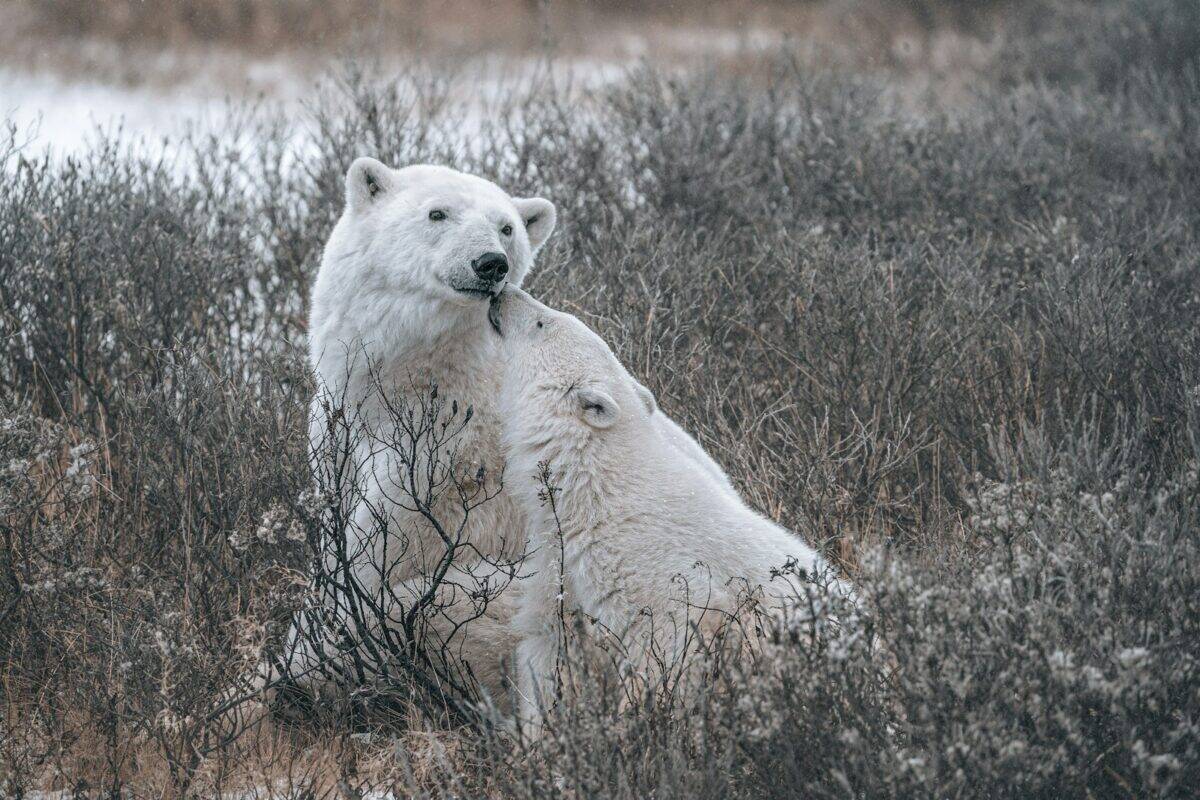
Bite force represents one of the most objective ways to measure a predator’s power. Measured in PSI (pounds per square inch), bite force indicates the pressure exerted when a bear’s jaws close. Bears have evolved specialized dentition for their omnivorous diets, including sharp canines for tearing meat and flattened molars for grinding vegetation. A bear’s bite force is generated by powerful temporalis and masseter muscles that attach to the skull and mandible. These muscles, particularly developed in carnivorous species, create compression forces that can crush bones, crack nuts, and tear through tough hide. Modern scientific methods for measuring bite force include computerized modeling based on skull morphology and jaw muscle mass, allowing researchers to estimate the bite force of even the rarest bear species. The diversity in bite force across bear species reflects their dietary adaptations and evolutionary history.
11. Polar Bear (Ursus maritimus) – The Arctic Titan
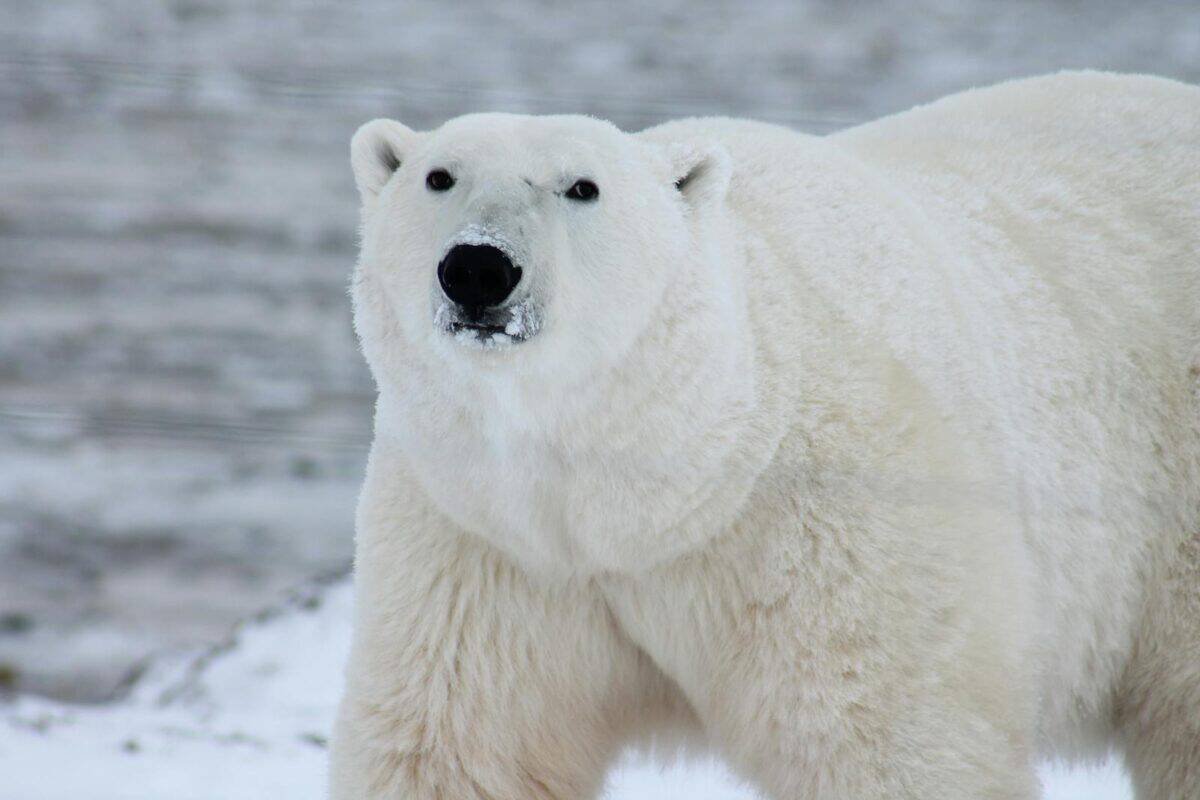
Topping our list, the polar bear stands as nature’s undisputed heavyweight champion among bears. With males weighing up to 1,700 pounds and standing nearly 10 feet tall on hind legs, polar bears combine massive size with specialized adaptations for Arctic survival. Their estimated bite force exceeds 1,200 PSI, nearly four times that of a lion. This tremendous jaw power allows them to crush the thick skulls of seals and process their tough, blubber-rich bodies. Polar bears possess the strongest forelimbs of any bear, necessary for breaking through ice up to 3 feet thick and swimming powerful strokes through frigid waters. Their enormous paws, measuring up to 12 inches wide, distribute weight over thin ice and deliver devastating blows capable of killing a seal with a single strike. The polar bear’s strength exists in perfect harmony with its environment—an apex predator evolved specifically for dominating one of Earth’s harshest habitats.
10. Kodiak Bear (Ursus arctos middendorffi) – The Island Giant

The Kodiak bear, an isolated subspecies of brown bear found only on the Kodiak Archipelago in Alaska, claims second place in our ranking. Rivaling polar bears in size, male Kodiaks can weigh up to 1,500 pounds and stand 10 feet tall when upright. Their estimated bite force ranges from 930-1,100 PSI, reflecting their omnivorous diet that includes large salmon, deer, and occasionally moose. What distinguishes Kodiak strength is their remarkable muscle density and bone structure—up to 2.5 times stronger than equivalent human musculature. Their isolated evolution on predator-free islands has allowed them to develop exceptional size and strength, with documented abilities to move objects weighing over half a ton. Kodiak bears can run at speeds up to 30 mph despite their massive size, combining quick bursts of speed with sustained power. Their paws feature 6-inch claws that function as multipurpose tools for digging, climbing, and securing prey. While slightly smaller than polar bears on average, Kodiaks possess comparable absolute strength, making them formidable apex predators.
9. Grizzly Bear (Ursus arctos horribilis) – The North American Powerhouse
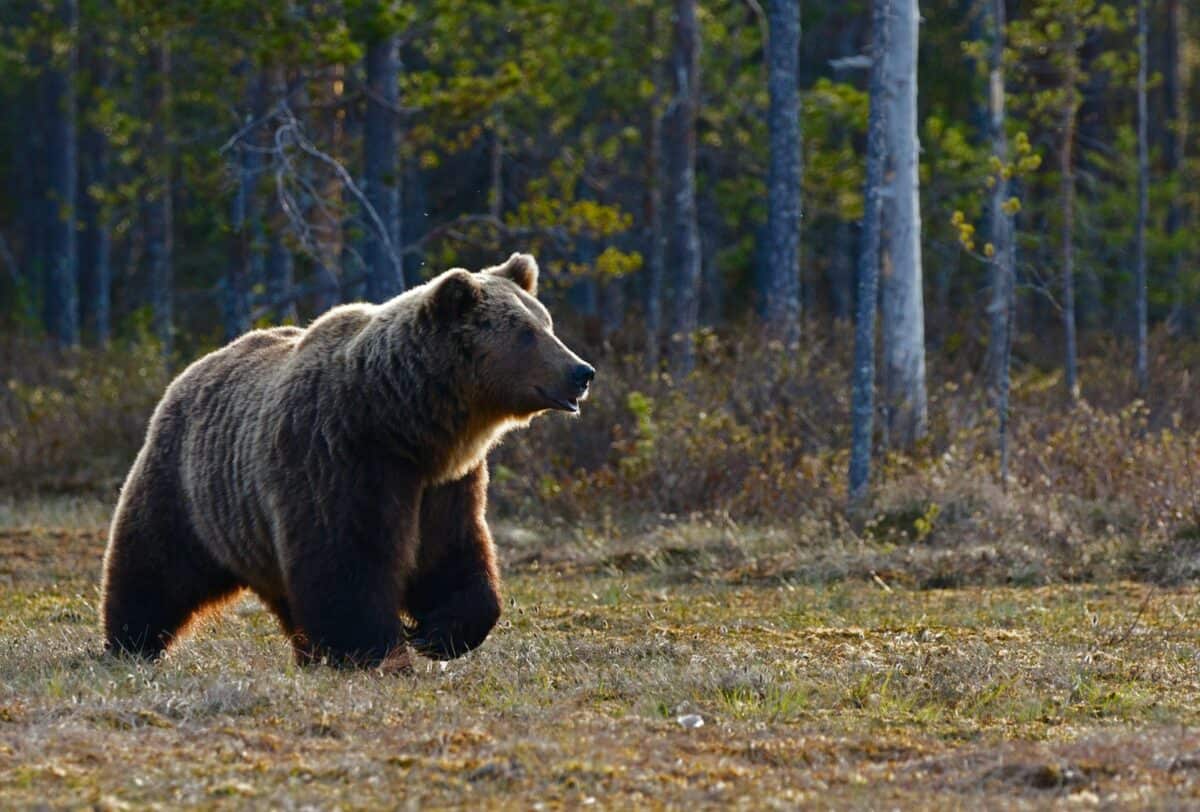
The grizzly bear, or North American brown bear, ranks third on our list with a combination of strength, aggression, and versatility that makes it one of the continent’s most respected predators. Males typically weigh between 600-900 pounds but can exceed 1,200 pounds in areas with abundant food. Their bite force registers between 850-975 PSI, complemented by some of the longest claws in the bear family at 4-5 inches. Grizzlies possess a distinctive shoulder hump composed of pure muscle mass that powers their digging ability, allowing them to excavate roots, bulbs, and rodent burrows with remarkable efficiency. Their strength allows them to move rocks weighing over 500 pounds, and there are documented cases of grizzlies flipping 700-pound dumpsters with apparent ease. Their predatory capabilities are equally impressive—grizzlies can kill an adult moose or bison with their striking power and have been observed running at speeds up to 35 mph over short distances. Their bone density exceeds that of other mammals by approximately 30%, providing structural support for their massive muscles and allowing them to survive impacts that would cripple other large animals.
8. Eurasian Brown Bear (Ursus arctos arctos) – The Old World Colossus

The Eurasian brown bear represents the ancestral form of all brown bears and holds fourth place in our strength ranking. Spanning territories from Western Europe to Russia, these bears show significant size variation, with Eastern populations typically larger than Western ones. Males average 550-800 pounds but can reach 1,000 pounds in prime Russian habitats. Their bite force measures approximately 850-930 PSI, reflecting their diverse diet that includes everything from berries to large ungulates. Eurasian brown bears possess exceptional digging strength, with the ability to overturn rocks weighing several hundred pounds in search of insects and roots. Their forelimb strength allows them to kill deer, boar, and even cattle with powerful strikes, while their endurance exceeds that of most large predators—capable of pursuing prey for distances over a mile. Russian populations, particularly in Kamchatka, approach Kodiak bears in size and strength, demonstrating how habitat richness directly influences physical development. Their adaptability across varied ecosystems, from Mediterranean scrubland to Siberian taiga, has led to the evolution of localized strength adaptations, with northern populations generally displaying greater overall power.
7. Ussuri Brown Bear (Ursus arctos lasiotus) – The Asian Mountain Giant

The Ussuri brown bear (also known as the black grizzly or Amur brown bear) ranks fifth on our list, representing one of Asia’s most powerful predators. Native to northern China, Korea, and the Russian Far East, these bears typically weigh between 550-750 pounds, with exceptional males approaching 900 pounds. Their bite force is estimated at 800-900 PSI, supported by a robust skull structure adapted for processing everything from pine nuts to large mammals. Ussuri bears possess remarkable climbing ability for their size, with powerful back legs allowing them to scale trees that most bears of comparable size cannot. Their adaptations to mountainous terrain have produced exceptional grip strength and stability, with the ability to navigate steep slopes while carrying heavy loads of food. These bears demonstrate extraordinary foraging strength, capable of tearing apart rotting logs and flipping boulders weighing hundreds of pounds in search of insects and small mammals. Observations in the Russian Far East have documented these bears killing adult moose and even smaller Asian bears when territories overlap, demonstrating their dominance in interspecies confrontations. Their thick neck muscles and robust skeletal structure provide resistance to injury during the violent mating battles common among males.
6. American Black Bear (Ursus americanus) – The Forest Athlete
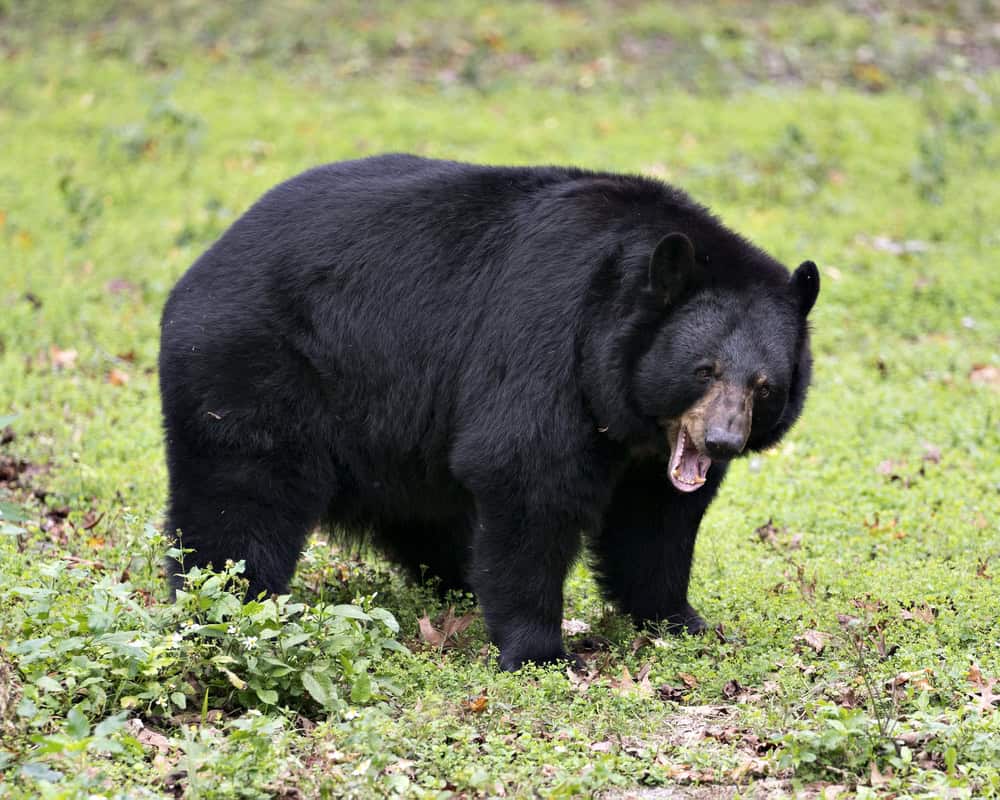
The American black bear occupies the sixth position in our strength ranking, demonstrating that impressive power can exist in a more compact package. Typically weighing between 200-600 pounds (though exceptional males may reach 800 pounds), these bears possess a bite force of approximately 650-700 PSI. What black bears lack in raw size, they make up for with exceptional climbing ability—they can scale a 100-foot tree in under 30 seconds and are capable of climbing with cubs on their back. Their arboreal adaptations include powerful forearms and curved claws that provide superior grip on bark. Despite their relatively smaller size, black bears can drag deer carcasses weighing over 300 pounds for considerable distances—sometimes vertically up trees to avoid competition. Research has shown their pulling strength exceeds 2-3 times their body weight, allowing even average-sized individuals to move objects weighing over 1,000 pounds. Their efficient muscle structure produces more power per pound than larger bear species, with exceptional fast-twitch muscle fibers that enable quick bursts of speed up to 35 mph. The black bear’s physical capabilities represent a perfect balance between strength, agility, and adaptability for forest environments.
5. Asiatic Black Bear (Ursus thibetanus) – The Canopy Strongman
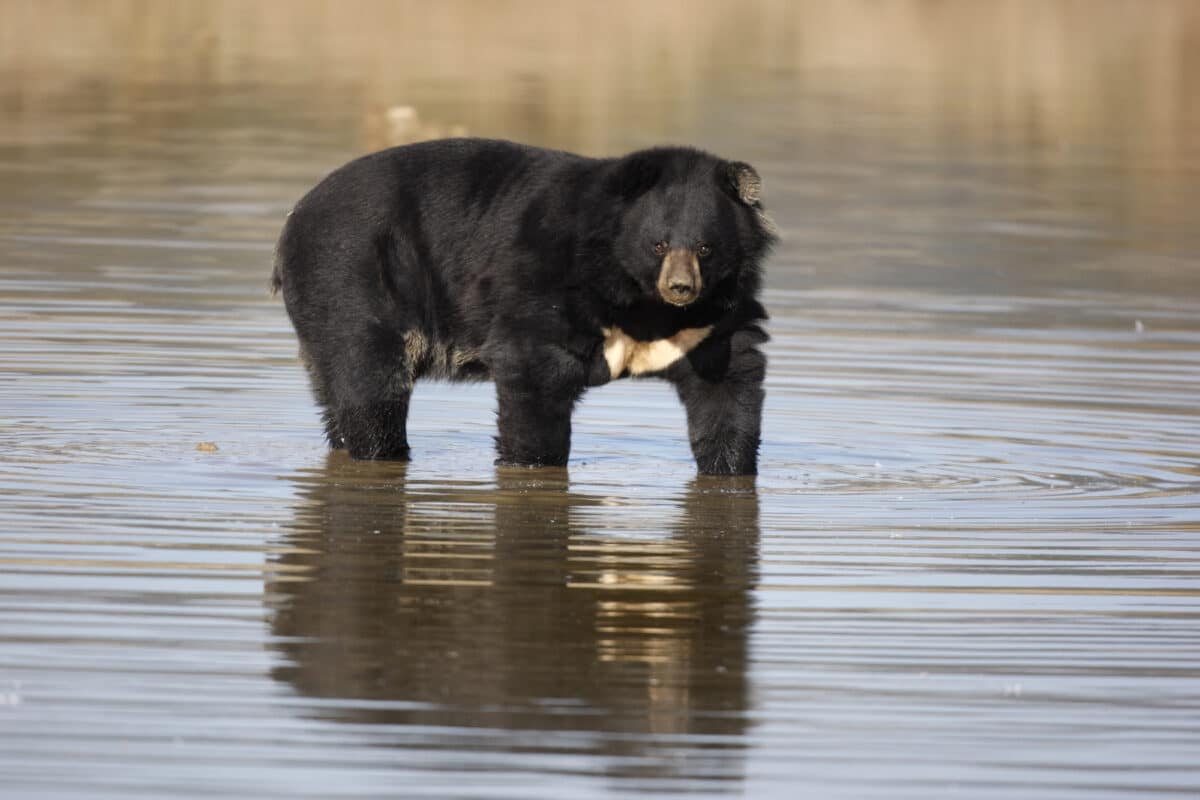
The Asiatic black bear, recognizable by its distinctive chest marking, ranks seventh in our analysis of bear strength. Found across southern and eastern Asia, these bears typically weigh between 220-440 pounds, with males in the northern range sometimes exceeding 500 pounds. Their bite force measures approximately 600-650 PSI, sufficient for their omnivorous diet that includes significant hard mast like acorns and walnuts. What distinguishes Asiatic black bears is their extraordinary arboreal strength—they are considered the most proficient climbers among medium to large bear species. Their specialized wrist anatomy allows for 180-degree rotation, providing exceptional grip and maneuverability in trees. These bears possess proportionally longer limbs than most bear species, with highly developed flexor muscles that enable them to hang from branches using only their forelimbs while feeding. Researchers have documented individuals supporting their entire body weight with a single paw while reaching for fruit with the other three limbs. Their strength is further demonstrated by their ability to tear apart termite mounds and bee nests with hardened exteriors that would resist most predators. Despite their moderate size, Asiatic black bears have been known to kill adult takin (a large Asian ungulate), demonstrating predatory capabilities that belie their relatively smaller stature.
4. Sloth Bear (Melursus ursinus) – The Termite Specialist
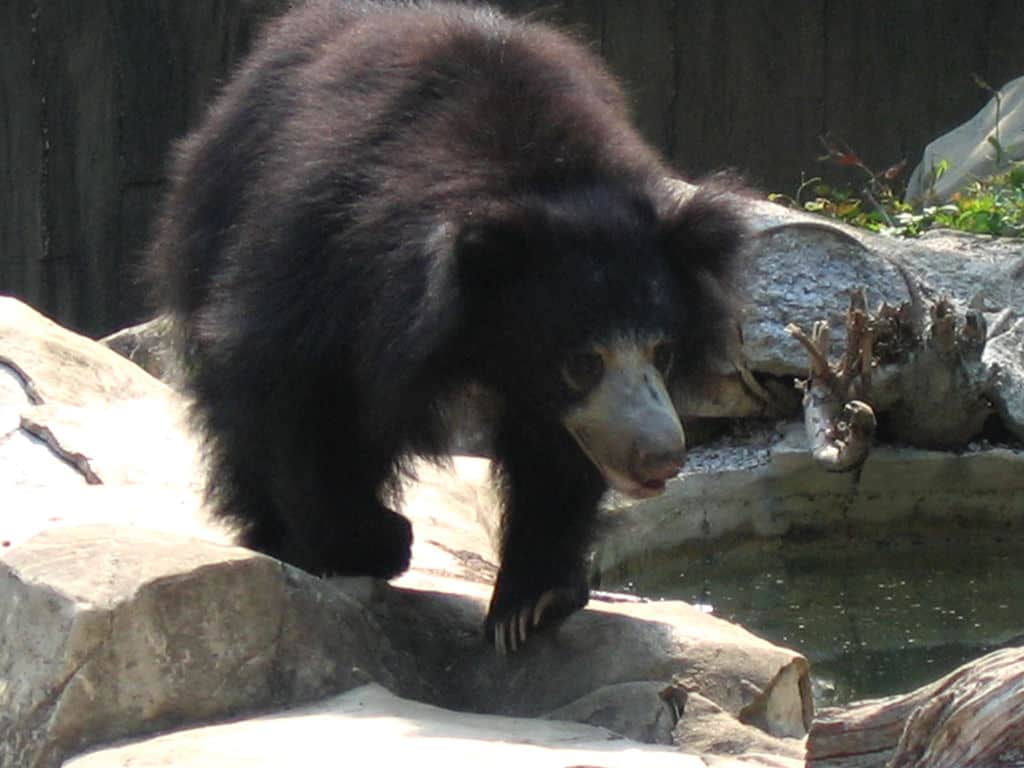
The sloth bear of the Indian subcontinent ranks eighth on our list, demonstrating specialized strength adaptations. Weighing between 200-300 pounds, these bears possess a bite force of approximately 550-650 PSI. What makes sloth bears remarkable is their specialized feeding adaptations—they have lost their upper incisors, developed protrusible lips, and possess a palate modified for their insectivorous diet. These adaptations create exceptional suction power, allowing them to vacuum up thousands of termites per minute from concrete-hard mounds. Their forearm strength is exceptional, with the ability to tear open termite nests that resist machete blows. Sloth bears possess the longest claws relative to body size of any bear species, measuring up to 4 inches, which they use to dismantle termite mounds and excavate subterranean insects. Their neck and shoulder muscles are highly developed, allowing them to exert pulling forces disproportionate to their size. Despite being smaller than many bear species, sloth bears are notoriously aggressive and have been known to displace much larger tigers from kills in Indian forests. Their specialized digging strength allows them to rapidly excavate burrows and root systems in search of food, moving hundreds of pounds of soil in minutes. While not possessing the raw power of larger bears, sloth bears represent a fascinating example of specialized strength evolution.
3. Himalayan Brown Bear (Ursus arctos isabellinus) – The High-Altitude Survivor

The Himalayan brown bear occupies ninth place in our strength ranking. These bears inhabit some of the world’s highest elevations, surviving in the extreme conditions of the Himalayan and Hindu Kush mountain ranges. Typically weighing between 300-500 pounds (with exceptional males reaching 600 pounds), these bears are smaller than their northern brown bear relatives due to the limited resources of their harsh habitat. Their bite force is estimated at 700-800 PSI, still powerful enough to process both plant matter and occasional meat. Himalayan brown bears have developed exceptional digging capabilities, able to excavate marmot burrows from rocky soil that would challenge mechanical equipment. Their adaptation to hypoxic (low-oxygen) environments has produced remarkable endurance, with documented cases of bears maintaining pursuit of prey over miles of rugged terrain at elevations above 10,000 feet. Their specialized paw structure provides superior traction on loose scree and snow, while their forelimb strength allows them to flip rocks weighing several hundred pounds when foraging. Despite their moderate size, Himalayan brown bears regularly displace larger predators including snow leopards from kills, demonstrating social dominance that extends beyond mere physical dimensions. Their strength represents a specialized adaptation to one of Earth’s most challenging environments.
2. Formosan Black Bear (Ursus thibetanus formosanus) – The Island Adapter

The Formosan black bear, a subspecies of Asiatic black bear endemic to Taiwan, ranks tenth on our strength scale. These island-adapted bears typically weigh between 200-300 pounds, making them smaller than their mainland relatives. Their estimated bite force ranges from 550-600 PSI, adapted for their diet that includes significant amounts of hard fruits and bamboo. What makes Formosan bears remarkable is their specialized strength adaptations for Taiwan’s mountainous terrain—they possess exceptional balance and agility, with documented ability to navigate narrow mountain ridges while carrying heavy food items. Their muscle fiber composition shows higher proportions of slow-twitch endurance fibers compared to mainland populations, allowing sustained activity across Taiwan’s steep topography. Formosan bears demonstrate remarkable dexterity, able to manipulate small objects with precision despite their powerful claws and massive paws. Their arboreal capabilities are highly developed, with the strength to climb trees bearing their favorite Machilus fruits even when these trees have trunks over 3 feet in diameter. Research has documented these bears creating “nests” by bending and breaking branches up to 2 inches thick, demonstrating significant upper body strength. While not matching the absolute power of larger mainland bears, Formosan black bears represent a fascinating example of isolated evolution producing specialized strength adaptations.
1. Sun Bear (Helarctos malayanus) – The Tropical Powerhouse
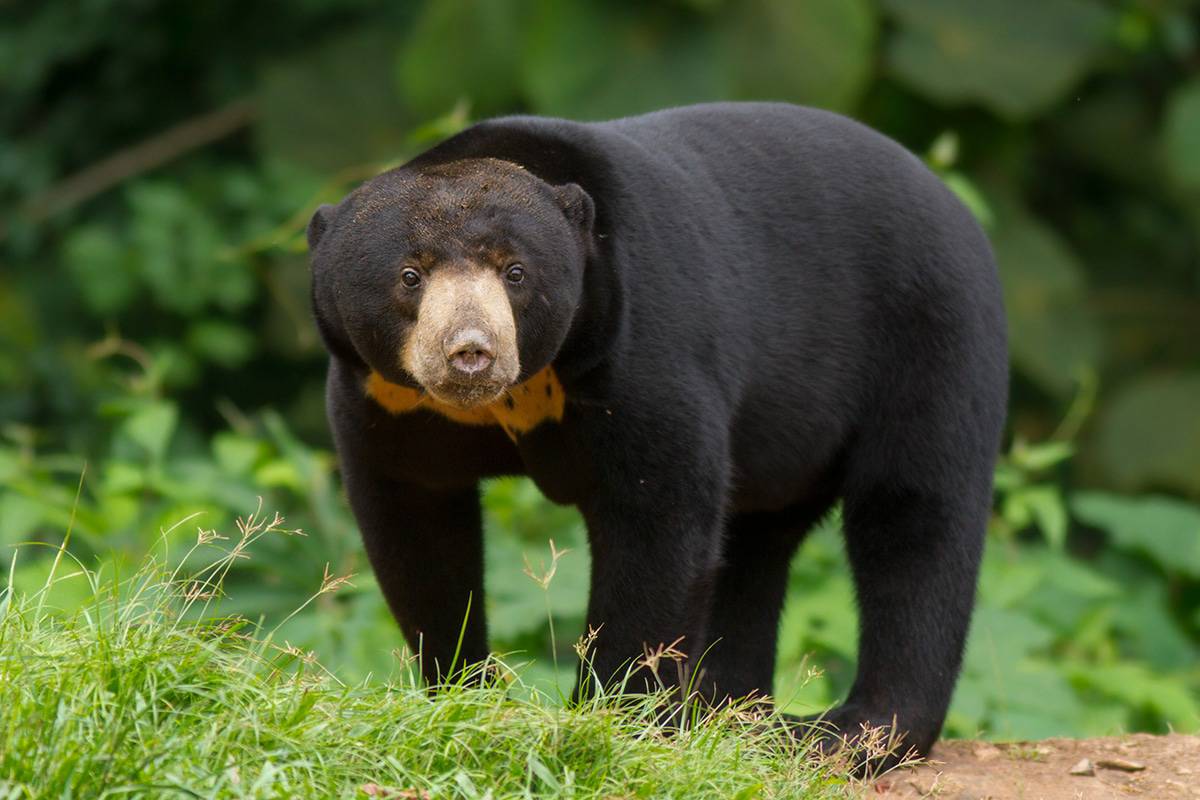
The sun bear, the smallest of all bear species, secures eleventh place in our strength ranking. Native to Southeast Asian tropical forests, these bears typically weigh between 60-150 pounds, with an estimated bite force of 450-550 PSI—impressive considering their diminutive size. Sun bears possess the longest tongue of any bear species (up to 10 inches), powered by specialized muscles that allow them to extract honey from bee nests and insects from tight crevices. Their arboreal strength is extraordinary relative to their size, with the ability to support their entire body weight with a single forelimb while feeding. Sun bears have evolved exceptionally powerful jaws and premolars capable of cracking open coconuts and similar hard-shelled tropical fruits that resist even machete blows. Their front claws are remarkably long and curved (up to 4 inches), providing both climbing ability and the strength to tear apart hardwood trees in search of insects. Pound for pound, sun bears may possess the greatest relative strength of any bear species, with documented ability to break into human structures by tearing through wooden planks several inches thick. Their compact musculature contains higher density of fast-twitch fibers than larger bears, providing exceptional explosive power that allows them to run, climb, and fight with an intensity that often surprises those who encounter them.
Conclusion:

From the icy dominance of the polar bear to the dense forest agility of the sun bear, the world’s bear species showcase a breathtaking spectrum of strength, adaptation, and survival. While size and bite force offer a glimpse into their physical power, each bear’s evolutionary story reveals deeper layers of specialization—from the tree-scaling capabilities of black bears to the crushing jaw strength of Kodiaks. These apex predators are more than just symbols of raw muscle—they are living examples of nature’s ability to shape creatures uniquely suited to their environments. By understanding the diverse strengths of these magnificent animals, we not only gain respect for their role in the wild but also a deeper appreciation for the fragile ecosystems they dominate.
- 11 Bear Species Ranked by Strength and Bite Force - August 12, 2025
- 15 Powerful Guard Dog Breeds to Protect Your Home - August 12, 2025
- 12 Funniest Quirks Shared by Pet Owners Everywhere - August 12, 2025

